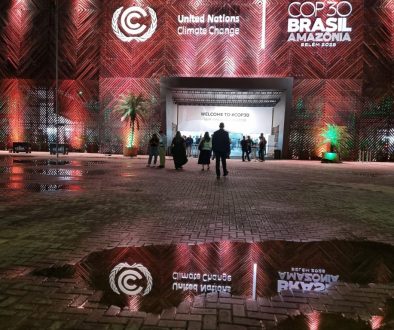Eskom updates South Africans on the power system
Monday, 30 January 2012: In its first quarterly State of the Power System briefing of 2012, Eskom today spelt out the measures required to ensure a stable and reliable power system to keep the lights on for all South Africans.
Eskom launched the quarterly briefings in January 2011 in line with its commitment to keep stakeholders up to date on the state of South Africa’s power system. Eskom has warned consistently that the system would be tight for the next few years until its new power stations are online, and that balancing supply and demand during the next two years would be particularly difficult, with a peak energy deficit in 2012.
One of the strategies Eskom has had to use in recent years to keep the lights on in a situation where supply remains inadequate is to shift planned maintenance, delaying or deferring maintenance outages in order to meet demand. This strategy is no longer sustainable. Most of Eskom’s power stations are in their mid-life and require more preventative maintenance in order to improve their performance and ensure their safety. However, over the past two years a backlog of maintenance outages has developed, and Eskom has identified it as a priority to reduce the backlog as well as keep up with the maintenance schedule.
Dames said that Eskom had made progress in tackling the backlog, reducing it from 36 units in May 2011 to 25 units. However, though the targeted maintenance ratio is 10%, the actual achieved in the financial year to date is just over 8%.
Summer is always maintenance season, when Eskom takes advantage of lower summer demand to take units out of service for planned maintenance. This summer the system is being run at higher levels of risk to tackle the backlog and keep up with the maintenance schedule while at the same time meeting demand. Worse than planned performance at some power stations has added to the challenge of balancing supply and demand and Eskom has been running its costly open cycle gas turbines at higher than normal levels during summer to meet demand.
Eskom reported back today on action taken over the past year to boost supply and curb demand. Eskom has over the past year signed up a total of just over 1 000 MW of capacity from independent power producers and municipalities. Coal handling and coal quality have been improved, with coal-related production losses showing an improving trend. Eskom’s demand side management programmes realised verified energy savings of 198.6 GWh during the third quarter. Power buyback agreements with large customers have been concluded as part our demand management programmes. Communication with customers has been stepped up and Eskom is working closely with government to develop solutions for the energy gap.
Dames said that a 10% or 3 000MW savings across all customers segments as envisioned in the Energy Conservation Scheme developed by Eskom, customers and Government in 2009, would allow for a reliable power system in South Africa and sufficient capacity to address the maintenance challenge. “We have said that we are resolved not to go back to the national power outages of 2008, but we cannot do it alone as Eskom, nor can we guarantee it. Therefore we urge South Africa to partner with us and save 10% of their energy use,” Dames said.
The Minister of Public Enterprises Malusi Gigaba said that Government, Eskom and business have been working together in the last two years to develop solutions. Some have been implemented while others need to be accelerated.
“From our side as government and as Eskom, we undertake to continue to be transparent about the state of the power system, as Eskom has been over the past year, and to keep you informed of developments which could affect the outlook for the system. We would like to thank those customers who are contributing energy savings. We request all citizens, big customers and small ones, to switch off, especially at peak times between 17h00 and 21h00,” Gigaba said.
“We have made it a priority to address the maintenance challenge, so that we can keep the lights on not only now, but also in the longer term, and we need to find the space to do that,” Eskom Chief Executive Brian Dames said. “The next two years will be critical. We urge all our customers to partner with us to save electricity.”
Source : Eskom



